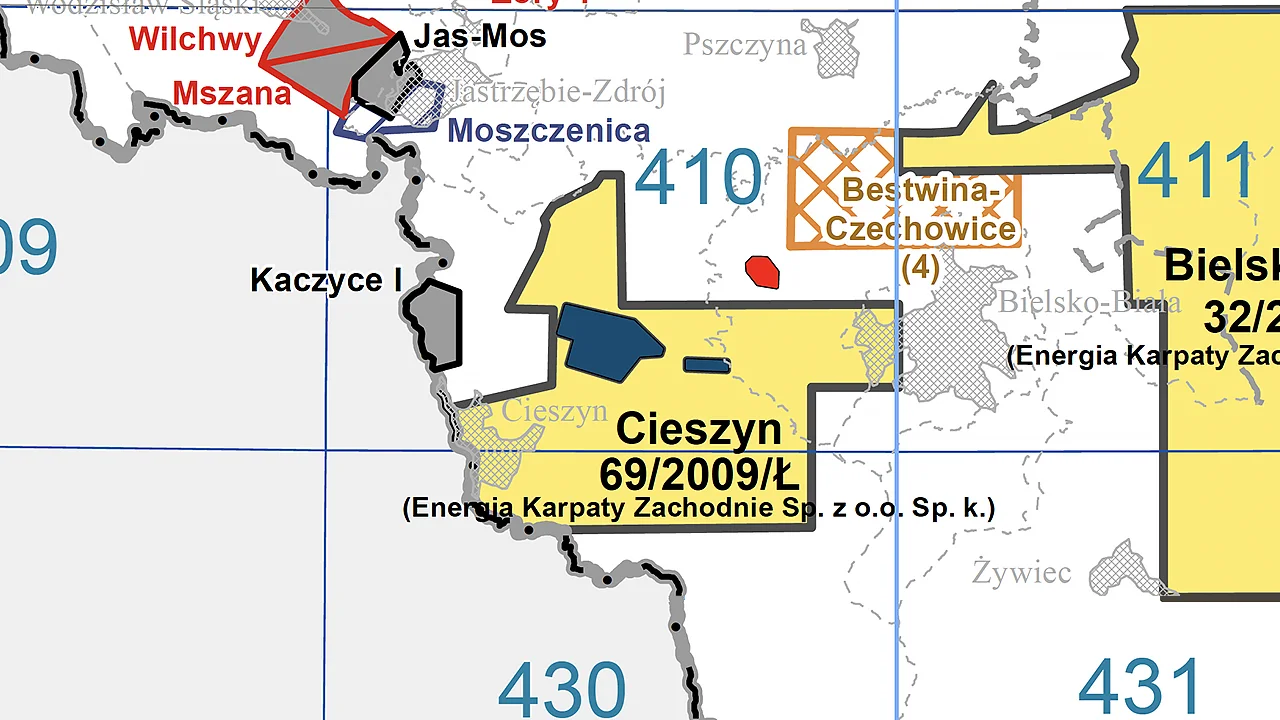Natural gas deposits in the vicinity of Cieszyn - geological and economic overview
Although this area was not so intensively exploited, seismic and geological data indicate the presence of oil- and gas-bearing structures.

Introduction
Cieszyn and its surroundings, located in the western part of the Outer Carpathians, is a region of great historical and cultural importance, but also interesting from the point of view of geology. This area belongs to the so-called western segment of the Flistic Carpathians, where oil and natural gas deposits were explored in the past. Although this region was not as intensively exploited as Podkarpacie, seismic and geological data indicate the presence of oil- and gas-bearing structures.
Geological characteristics of the region
The geological structure of the Cieszyn area is complex and includes several important lithostratigraphic complexes:
- Carpathian floes — sandstones, shales and marbles forming numerous folds and depressions, constituting the main reservoir rocks in the region,
- Miocene formations — pools and sandstone-silt complexes, which within the pre-Carpathian sinkhole can create local lithological and structural traps promising for gas accumulation,
- carbon — older sedimentary formations, often of a carbonaceous nature, the various links of which can act as source and reservoir rocks,
- Devonian and Cambrian and older subsoil — deeper carbonate and sandstone complexes, which on a regional scale (Podkarpacie, Małopolska basin) have proven the ability to generate and accumulate hydrocarbons,
The Cieszyn zone is part of the geological area where oil and natural gas accumulations have been recognized in the past, especially in Miocene sandstones as well as in older sediments.
Natural gas deposits in Cieszyn
The geological work to date indicates that natural gas in the Cieszyn area is mainly found in:
- Miocene formations — in which lithostratigraphic traps are possible, e.g. sandstone lenses surrounded by impermeable rocks or wedging of sandstone layers into the Carpathian subsidence zones
- deeper Devonian, Carboniferous, Cambrian or older complexes — which can act as additional perspective horizons, based on structural or lithostratigraphic traps. These rocks in the surrounding areas, e.g. in the Czech Republic, represent a proven oil and gas bearing potential. The presence of these rocks in the Cieszyn subsoil increases the exploration potential of the region.
Economic Importance and Prospects
The possibility of exploiting natural gas in the Cieszyn area has several potential advantages:
- local energy source — which could support local governments and industry in the region,
- cross-border cooperation with the Czech Republic in the field of research and potential exploitation,
- increasing energy security through diversification of supply,
- expansion of the raw material base thanks to the possibility of using both shallow Miocene deposits and deeper Devonian, Cambrian or Carboniferous structures.
Summary
The surroundings of Cieszyn have promising natural gas resources related to the construction of the Carpathian fleece and its subsoil. Miocene traps may be of the most significant importance, and in the deeper subsoil also Devonian, Cambrian and Carboniferous structures, which in adjacent areas play an important role in the accumulation of hydrocarbons.
The development of gas exploration and production in this region can contribute to strengthening the local economy and increasing the energy security of Poland, provided that a balance is maintained between the exploitation of raw materials and the protection of the environment and cultural heritage of Cieszyn.
